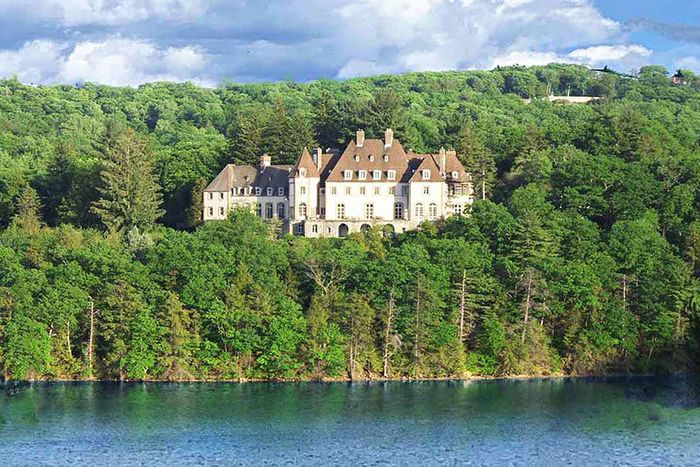
After joining forces in the 1870s to design summer cottages in the beach resort town of Elberon, New Jersey, Charles McKim, William Mead, and Stanford White would go on to design homes for the most prominent New York City families in the late 19th century, including the Vanderbilts, the Morgans, and the Pulitzers. The trio didn’t stick to just one aesthetic — they moved freely from Beaux Arts homes to Colonial Revivals.
Wealthy New Yorkers continued to commission new homes from the firm even after its founders died (White in 1906, McKim in 1909, and Mead in 1928), including this 1930 French-style chateau in Tuxedo Park, a gated enclave about an hour northwest of Manhattan. Socialite Ruth Hill Lorillard Heidsieck — whose father-in-law, Pierre Lorillard IV, developed the Tuxedo Park community — commissioned the sprawling home after purchasing the estate in 1916 and demolishing an existing house designed by prolific Tuxedo Park architect Bruce Price. The new house took on the same name, Chastellux, in reference to the Marquis de Chastellux (an aide to General Washington) who allegedly had admired the view of Tuxedo Lake from that spot.
The three-story structure has an asymmetrical floor plan with a high steeped hipped roof that rises to a ridge. Normandy tiles top round and square towers, while the front entrance is lined with unpolished pink marble, and arches span over double doorways. Inside, the long entrance hallway has original hand-painted chinoiserie wallpaper, the living room has Venetian carved and painted wood trim, and there are 17th-century canvases and Louis XV-style crystal chandeliers throughout. It’s all part of the original interior design, which was done by McMillen Inc., the New York City–based interior design firm that’s been operating for almost 100 years.
In the mid-1990s, air conditioning was added, and four rooms — including a butler room and the pantry — were combined to create a new kitchen off the dining room. (The original kitchen on the lowest level is still there, and has an old refrigerator from the ’60s.) Otherwise, not much has changed — there are 16 original fireplaces, a wood-paneled and marble elevator, and a spiral staircase with wooden floors and wrought iron railing that connects all four floors.
The current owner, who bought the house in the early 1990s, is unloading it in order to spend more time at his homes in Florida. So far, several foreigners (including one Frenchman who loved the chateau aesthetic) have virtually toured the home, but the majority of the interest has come from young families, well-off Tuxedo Park locals looking for an upgrade, and Manhattanites lured by the mansion’s location on Tuxedo Lake.
“An architecture person is going to buy this home,” says Bruno. But nature enthusiasts should also take note: The home’s eight acres were landscaped by the Olmsted Brothers, with stone walls and forests of beech trees, weeping willows, and evergreens. While overgrowth has since overtaken the Olmsted’s intricate flower beds, the chateau has the original plans if a new owner was interested in replanting it down to the last bulb.











